What to do if Panasonic Security Camera picture is flipped vertically?
- Llaura47Sep 9, 2025
Verify that the stand-alone (Desktop) installation setting has been selected correctly.
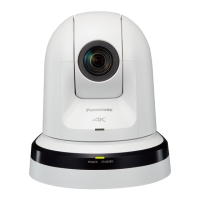
What to do if Panasonic Security Camera picture is flipped vertically?
Verify that the stand-alone (Desktop) installation setting has been selected correctly.
Why Panasonic AW-UE70WP Security Camera unit turns in the opposite direction to the one operated?
Check if the stand-alone (Desktop) installation setting has been selected correctly. If the unit is connected to the controller, the reversal setting may have been established at the controller. Consult the controller's operating instructions.
What to do if Panasonic AW-UE70WP status display lamp flashes red several times?
An error, such as attempting a recording operation without an SD card, has occurred. Check the event log.
Why Panasonic AW-UE70WP cannot access the camera from a mobile terminal?
Ensure the URL is correct and that “/mobile” has been entered at the end of the URL. Also, check if the HTTPS SSL encryption of the mobile terminal differs from that of the unit.
Why Panasonic AW-UE70WP images appear jerky when the 1080/29.97PsF or 1080/25PsF format is selected?
Operation is problem-free.
| Camera Type | PTZ Camera |
|---|---|
| Optical Zoom | 20x |
| Power Supply | DC 12 V |
| IP Control | Yes |
| IP Rating | IP55 |
| Sensor Type | 1/2.3-type MOS |
| Video Output | HDMI, 3G-SDI |
| Network Protocols | IPv4, IPv6, RTSP, RTP, UDP, HTTP, HTTPS |
| Resolution | 1920 x 1080 |
| Lens | 20x Optical Zoom Lens |
| Pan/Tilt Range | Pan: ±175°, Tilt: -30° to +90° |
| Compression Format | H.264 |
| Operating Temperature | -10°C to +50°C |
| Dimensions (W x H x D) | 160 mm x 160 mm x 190 mm |
Explains the structure and content of the operating instructions manual.
Provides a general overview of the unit's features and capabilities.
Details the necessary computer specifications for operating the unit.
Highlights crucial information regarding the PC environment and web browser.
States Panasonic's disclaimer of liability for product use and issues.
Addresses security risks and precautions when using the unit on a network.
Details the procedure for powering the unit on using the wireless remote control.
Details the procedure for powering the unit off using the wireless remote control.
Shows which functions can operate concurrently based on the selected Priority Mode.
Explains how to select the unit using the wireless remote control.
Explains how to select the unit using the controller.
Describes the four preset shooting modes available for different circumstances.
Details the step-by-step process for selecting a shooting mode via the wireless remote control.
Explains how to pan, tilt, and return the camera to its reference position.
Details how to zoom in and zoom out using the unit's controls.
Explains how to adjust the speed for camera direction and zoom operations.
Provides troubleshooting steps for when the unit fails to move.
Offers solutions for when color bars are displayed instead of the camera picture.
Instructs on how to exit the camera menu screen.
Guides on how to switch lens focus to automatic adjustment.
Provides steps to adjust camera picture brightness when it is too light or too dark.
Offers advice on resolving color issues in camera pictures.
Introduces manual shooting operations including focus, iris, shutter, and gain adjustments.
Explains how to register and recall camera settings using preset memories.
Details the process of adjusting white balance for accurate color reproduction.
Describes the black level adjustment for aligning multiple cameras.
Explains genlock adjustment for phase alignment in multi-camera setups.
Details how to manually adjust the camera's focus using the controls.
Explains how to manually adjust the camera's iris for exposure control.
Describes how to manually adjust the shutter speed for exposure and motion blur control.
Details how to manually adjust the camera's gain for light sensitivity.
Provides steps to save current camera settings into preset memory slots.
Explains how to recall previously saved camera settings from preset memories.
Covers automatic white balance (AWB) adjustment procedures using the wireless remote.
Explains the automatic tracking white balance adjustment function.
Describes the preset white balance modes for specific lighting conditions.
Details how to manually set the color temperature using the VAR mode.
Explains how to manually adjust R and B gain for fine-tuning white balance.
Compares camera menu operations across wireless remote and controllers.
Explains how to exit camera menu operations using different controllers.
Details operations using the AW-RP50 controller for menu and mode switching.
Explains how to switch between Day and Night modes using the controller.
Describes how to set color temperature using the AW-RP50 controller.
Explains how to set the preset speed table using the AW-RP50 controller.
Details how to freeze images during preset playback using the AW-RP50 controller.
Explains how to set the optical image stabilization function using the AW-RP50 controller.
Describes how to set the digital extender function using the AW-RP50 controller.
Explains how to assign functions to USER buttons on the AW-RP50 controller.
Details operations using the AW-RP120 controller for menu and mode switching.
Explains how to switch between Day and Night modes using the AW-RP120 controller.
Describes how to set color temperature using the AW-RP120 controller.
Explains how to set the preset speed table using the AW-RP120 controller.
Details how to freeze images during preset playback using the AW-RP120 controller.
Explains how to set the optical image stabilization function using the AW-RP120 controller.
Describes how to set the digital extender function using the AW-RP120 controller.
Explains how to assign functions to USER buttons on the AW-RP120 controller.
Details operations using the AK-HRP200 controller for menu operations.
Explains how to access and navigate the unit's camera menu system.
Shows the structure and options available in the main camera menu screen.
Details the camera settings available when the unit is in Full Auto shooting mode.
Explains the selection of shooting modes (Full Auto, Manual1-3) for different conditions.
Describes how to set the contrast level for image brightness adjustment.
Explains the Auto Slow Shutter function and its configuration.
Details the use of built-in ND filters to adjust light intensity.
Explains how to select between normal and low-light shooting modes.
Describes how to adjust the level for switching between Night and Day modes.
Details camera settings available when in Manual shooting modes.
Explains how to display the Contrast screen for brightness adjustments.
Introduces the Picture screen for adjusting overall image quality.
Explains the use of the Matrix menu for 16-axis color adjustment.
Details contrast settings including mode, level, and shutter limits.
Explains how to adjust shutter speed using Step or Synchro modes.
Describes the Frame Mix function for gain-up via sensor storage.
Details how to set the maximum frame addition amount for Auto settings.
Explains how to adjust image gain for light sensitivity.
Details setting the maximum gain-up amount for automatic gain control.
Explains the use of ND filters for light intensity adjustment.
Covers gain, AGC Max Gain, ND Filter, Day/Night, and Night-Day Level settings.
Explains how to select between normal and low-light shooting modes.
Details adjusting the level for switching between Night and Day modes.
Details settings for Chroma Level, White Balance Mode, Color Temperature, R/B Gain, and Pedestal.
Describes how to set the color intensity of images.
Explains the selection of different white balance modes.
Details how to specify color temperature when White Balance Mode is set to VAR.
Explains manual adjustment of R and B gain for white balance fine-tuning.
Details how to adjust the black level for better visibility in dark image parts.
Covers settings for Detail, Flesh Tone Mode, HDR, DRS, Gamma Type, and Gamma Level.
Explains how to adjust image detail (sharpness).
Details adjusting image sharpness when High detail is selected.
Details adjusting image sharpness when Low detail is selected.
Describes setting the flesh tone mode for smooth skin appearance.
Explains how to adjust the high dynamic range mode for contrasty scenes.
Details the DRS function for compensating images with light/dark differences.
Explains selecting gamma curve types (Normal, Cinema).
Details adjusting gamma compensation level when Normal type is selected.
Covers settings for Back Light Compensation and Digital Noise Reduction (DNR).
Explains the backlight compensation function to prevent darkening in backlit scenes.
Details the digital noise reduction effect for low-light environments.
Explains how to adjust color saturation and phase using the 16-axis color matrix.
Details the System menu for configuring output image settings like Genlock and Output.
Explains the Genlock screen for phase adjustment in multi-camera setups.
Details the Output screen for selecting camera output image settings.
Covers settings for installation status and operating speed.
Explains horizontal phase adjustment during genlock synchronization.
Details adjusting the horizontal phase during genlock.
Explains setting the increment for horizontal phase adjustment.
Details how to configure output format and frequency for HDMI and SDI.
Explains how to change the video format for HDMI output.
Explains how to change the video format for SDI output.
Details how to switch the frame frequency for video output.
Explains how to configure the priority output mode for video transmission.
Shows the confirmation screen for changing the priority mode setting.
Details the process of changing the video format and confirmation screens.
Explains how to change the frame frequency and the associated confirmation screen.
Covers settings for Install Position, Preset Speed Table, Preset Speed, Preset Scope, Freeze During Preset, Speed With Zoom POS, Focus Mode, and Focus ADJ With PTZ.
Explains how to select the installation method (Desktop or Hanging).
Details setting the preset speed table for playback actions.
Explains setting preset pan-tilt operation speeds.
Describes selecting items to recall from preset memory.
Explains the function for freezing images during preset playback.
Details adjusting pan-tilt speed in conjunction with zoom magnification.
Explains how to set the focus mode to Auto or Manual.
Details compensating for out-of-focus issues during PTZ operations.
Covers settings for Zoom Mode, Max Digital Zoom, D.Extender, D.Extender Magnification, OIS, and Tally.
Explains how to configure the maximum zoom magnification.
Details setting the maximum digital zoom magnification.
Explains how to set the digital extender function.
Details setting the magnification for the digital extender.
Explains how to set the optical image stabilization function.
Details setting the tally lamp function.
Covers settings for IR Control, CAM/BAR, Bars Type, and Bars Title.
Explains enabling/disabling IR control operations via wireless remote.
Details configuring the unit's remote control ID.
Explains switching between color bar and camera image display.
Details changing the type of color bar to display.
Explains setting the camera title display for color bars.
Covers OSD Mix settings, including OSD Off With Tally and OSD Status.
Covers settings for Audio, Input Volume, Plugin Power, ALC, Equalizer, Protocol, and Model Select.
Explains enabling/disabling audio input signal.
Details setting the volume for microphone and line inputs.
Explains turning plug-in power on/off.
Details turning automatic level adjustment for audio on/off.
Explains setting the equalizer function (Low Cut, Speech Enhancement).
Details setting the protocol model for serial communication.
Covers the Maintenance screen for system log checks and initialization.
Explains how to check the unit's firmware version.
Details checking IP address, subnet mask, and default gateway settings.
Explains how to initialize camera settings to factory defaults.
Shows the screen displaying the unit's firmware version.
Displays IP address, subnet mask, and default gateway; these cannot be changed here.
Explains the process and implications of initializing camera settings.
Table showing camera menu items under the Top Menu for Full Auto and Manual modes.
Table detailing camera menu items and their factory/selection settings.
Table detailing camera menu items and their factory/selection settings.
Explains how to access and view the unit's interface via a web browser on a PC.
Details how to switch between live video and the setup interface on the web screen.
Explains how to display and control a single camera's feed via the web interface.
Explains how to switch between different menu displays on the web screen.
Details how to select display methods for viewing multiple IP camera feeds.
Explains how to select image compression format (H.264 or JPEG).
Describes stream buttons for selecting H.264 image streams.
Explains operations for recording video and audio to an SD card via the web interface.
Details how to control on-screen display (OSD) settings via the web interface.
Explains how to turn the unit on or put it into standby mode via the web interface.
Describes how to lock operations on the control screen to prevent accidental changes.
Describes the main area where IP video from the camera is displayed.
Explains how to use the on-screen control pad for camera movement and operations.
Details how to adjust image brightness via the web interface.
Explains how to select the speed for pan, tilt, zoom, and focus operations.
Explains how to select and move to preset camera positions via the web interface.
Details how to switch shooting modes via the web interface.
Explains how to display the image in full-screen mode.
Describes how to capture and save a still image snapshot.
Explains how to turn audio on/off and adjust volume.
Indicates when an SD card is being accessed.
Displays the unit's set date and time.
Explains how to monitor images from multiple cameras simultaneously on one screen.
Details selecting display methods for viewing multiple IP camera feeds.
Details the procedure for accessing the web setup screen using user credentials.
Explains the layout and functionality of the web setup screen for unit configuration.
Covers settings within the Basic screen, including priority mode and clock settings.
Details how to configure the priority output mode for video transmission.
Explains how to set the unit's clock using PC sync, NTP, or manual methods.
Details settings for enabling or disabling summer time.
Explains setting the start time and date for summer time.
Explains setting the end time and date for summer time.
Covers configuration settings for the camera title on the live page.
Details format settings for recording video to an SD card and initializing it.
Explains how to set recording format, size, frame rate, and bit rate for SD cards.
Shows the remaining capacity and total capacity of the SD card.
Details the process of formatting (initializing) an SD card.
Covers IP video settings for JPEG and H.264 images, including initial display settings.
Details IP video settings for JPEG and H.264 images.
Explains how to select images displayed when the Live screen opens.
Details settings for JPEG images, including transmission, capture size, refresh interval, and quality.
Details settings for H.264 images, including transmission and internet mode.
Explains how to select the resolution for H.264 images.
Details setting the transmission mode for H.264 images.
Explains how to set the frame rate for H.264 images.
Details specifying the H.264 bit rate per client.
Explains selecting the transmission format for H.264 images (Unicast, Multicast).
Details entering the unicast port number for sending images.
Explains entering the unicast port number for sending audio.
Details entering the multicast IP address for sending images and audio.
Explains entering the multicast port number.
Details entering the TTL/HOPLimit value for multicast.
Covers the tab for image quality adjustment and preset position settings.
Explains how to adjust image quality settings.
Details how to access the preset position screen.
Explains selecting the shooting mode that matches the situation.
Details contrast settings including mode, level, and auto shutter limit.
Explains setting the shutter speed limit for Auto Shutter.
Details selecting the camera shutter mode (Off, Step, Synchro).
Describes the Frame Mix function for gain-up.
Details setting the maximum frame addition amount.
Explains how to adjust image gain for light sensitivity.
Details setting the maximum gain-up amount for automatic gain control.
Explains the use of ND filters for light intensity adjustment.
Explains how to select normal or low-light shooting modes.
Details adjusting the level for switching between Night and Day modes.
Covers settings for Chroma Level and AWB.
Explains the selection of different white balance modes.
Details how to specify color temperature.
Explains manual adjustment of R and B gain for white balance fine-tuning.
Explains how to adjust image detail (sharpness).
Details adjusting image sharpness when High detail is selected.
Details adjusting image sharpness when Low detail is selected.
Describes setting the flesh tone mode for smooth skin appearance.
Explains how to adjust the high dynamic range mode.
Details the digital noise reduction effect for low-light environments.
Details how to adjust the black level.
Details the DRS function.
Explains selecting gamma curve types.
Details adjusting gamma compensation level.
Explains the backlight compensation function.
Explains how to adjust color saturation and phase.
Covers operations and adjustments related to preset positions.
Details controlling pan, tilt, and lens operations.
Explains how to adjust zoom magnification.
Details how to adjust focus manually or automatically.
Explains how to use the on-screen control pad for camera movement and operations.
Explains how to select the speed for operations.
Details adjusting pan-tilt speed in conjunction with zoom.
Details compensating for out-of-focus issues during PTZ operations.
Covers setting preset speed tables and preset speeds.
Describes selecting items to recall from preset memory.
Explains setting panning and tilting movement range limits.
Covers the System tab for configuring output image settings like Genlock and Output.
Explains the Genlock screen for phase adjustment.
Details the Output screen for format and frequency settings.
Explains how to change the video format for HDMI output.
Explains how to change the video format for SDI output.
Covers settings for Install Position, Preset Speed Table, Preset Speed, Preset Scope, Freeze During Preset, Zoom Mode, Max Digital Zoom, D.Extender, and D.Extender Magnification.
Explains how to select the installation method.
Details setting the preset speed table.
Explains setting preset pan-tilt operation speeds.
Describes selecting items to recall from preset memory.
Explains how to configure the maximum zoom magnification.
Details setting the maximum digital zoom magnification.
Explains how to set the digital extender function.
Details setting the magnification for the digital extender.
Explains how to set the optical image stabilization function.
Details adjusting pan-tilt speed in conjunction with zoom.
Explains how to set the focus mode to Auto or Manual.
Details compensating for out-of-focus issues.
Details setting the tally lamp function.
Explains enabling/disabling IR control operations.
Details configuring the unit's remote control ID.
Explains switching between color bar and camera image display.
Details changing the type of color bar to display.
Explains setting the camera title display for color bars.
Covers OSD Mix settings, including OSD Off With Tally and OSD Status.
Details setting the protocol model.
Explains how to set up cameras for multi-screen display.
Details inputting the IP address or host name of cameras for multi-screen display.
Explains inputting the camera title for display on the multi screen.
Covers registering users and configuring authorization settings for accessing the unit.
Details configuring user authorization settings for PC and mobile access.
Explains specifying the method of user authentication (Basic or Digest).
Details inputting the user name for accessing the unit.
Explains retyping the password for authentication.
Details selecting the user access level (Administrator or Camera control).
Explains how to view registered users and delete them.
Details configuring host authorization settings to restrict PC access.
Explains setting host authorization to On or Off.
Details inputting the IP address of PCs allowed to access the camera.
Explains selecting the host access level.
Details viewing registered host IP addresses.
Covers settings for priority stream transmission to maintain image quality.
Explains activating priority stream transmission.
Details inputting the IP address of the first send destination.
Explains inputting the IP address of the second send destination.
Details selecting the stream type (JPEG or H.264).
Explains configuring network settings including IPv4 and Advanced tabs.
Details network configuration settings.
Covers IPv4 network settings, including DHCP, IP address, subnet mask, and default gateway.
Explains how to acquire DNS server addresses automatically or manually.
Details inputting the IP address of the DNS server.
Explains inputting the secondary DNS server address.
Covers IPv6 network settings including manual configuration and DHCPv6.
Covers common settings for both IPv6 and IPv4, including HTTP port, Max RTP packet size, and HTTP max segment size.
Details setting the port number for HTTP connections.
Explains limiting the size of RTP packets sent from the camera.
Details limiting the maximum segment size transmitted by the camera.
Explains selecting the amount of data to be distributed.
Details selecting the period for network settings from Easy IP Setup Software.
Covers advanced network settings including FTP, NTP, UPnP, and HTTPS.
Details configuring settings related to the FTP server.
Explains entering the FTP server IP address or host name.
Details entering the directory name to save video data.
Explains entering the user name for FTP server access.
Details entering the password for FTP server access.
Explains entering the port number for FTP server control.
Details selecting the FTP communication mode.
Details settings relating to NTP server address and port number for time synchronization.
Explains setting whether to use an NTP server for time synchronization.
Details selecting the method to acquire the NTP server address.
Explains inputting the NTP server IP address or host name.
Details inputting the port number of the NTP server.
Explains selecting the interval for acquiring time from the NTP server.
Explains the UPnP function for automatic setting of port forwarding.
Details setting whether to use the router's port forwarding function.
Explains how HTTPS improves communication safety and enables encrypted access.
Details generating a CSR for HTTPS security certificate application.
Explains how to install a server certificate issued by a Certificate Authority.
Shows information relating to the installed server certificate.
Details setting the connection method (HTTP or HTTPS).
Explains setting the port number for HTTPS connections.
Details the procedure for encrypting access and setting HTTPS for communication safety.
Explains how to generate a CRT key for SSL encryption.
Details the process of generating a self-signed security certificate.
Explains how to generate a Certificate Signing Request (CSR) for HTTPS.
Details how to install a server certificate issued by a Certificate Authority.
Explains how to set the method to access the camera (HTTP or HTTPS).
Details how to access the camera using HTTPS via a web browser.
Provides steps to install the security certificate to avoid browser warnings.
Covers maintenance operations including system log checks and initialization.
Details checking system logs (event logs and error logs).
Allows checking software versions, MAC address, and serial number.
Explains how to download and upgrade the unit's firmware.
Confirms the status of the unit, including UPnP and router global address.
Details how to initialize unit settings to default values and reboot the unit.
Explains how to save unit settings to a PC or load settings from a PC.
Details specifying the type of settings to save (Camera, Network, Priority Mode).
Explains how to save unit settings to a personal computer.
Details how to upload activation files or settings to the unit.
Explains how to perform activation (register unlock key) to add functions.
Details obtaining serial number and other information.
Explains uploading an activation file to the unit.
Provides instructions on how to insert and eject an SD card.
Explains the process of recording video and audio to an SD card.
Guides on setting the priority mode for SD card recording.
Details setting the format for video recording to an SD card.
Provides a table showing recording modes and estimated durations for different SD card capacities.
Explains how to play back recorded content from an SD card using the web interface.
Details the Play List screen for selecting and managing recorded content.
Describes the playback controls available on the screen.
Explains how to download recorded files to a personal computer.
Details how to check the remaining capacity of an SD card.
Explains how to format an SD card.
Lists functions controllable when the unit is used as a web camera.
Details image adjustment controls like Brightness, Contrast, Hue, and Saturation.
Explains camera controls such as Zoom, Focus, Exposure, Aperture (Iris), Pan, Tilt, and Roll.
Details how to enlarge or reduce images using zoom.
Explains how to adjust focus manually or automatically.
Details how to set shutter speed manually or automatically.
Explains how to adjust the lens iris manually or automatically.
Details how to pan the camera left or right.
Explains how to tilt the camera up or down.
Covers audio input settings, including enable/disable and volume control.
Explains how to perform pan and tilt operations from a mobile terminal.
Details how to perform zoom operations from a mobile terminal.
Explains how to select preset camera positions via a mobile terminal.
Details how to switch image resolution via a mobile terminal.
Explains how to adjust the iris operation from a mobile terminal.
Details how to adjust focus operation from a mobile terminal.
Explains how to perform camera menu operations from a mobile terminal.
Describes how the tally lamp status is displayed on a mobile terminal.
Explains how to perform SD card recording operations from a mobile terminal.
Details the basic operations for setting and releasing panning and tilting movement limits.
Provides steps to set the upper, lower, left, and right movement limits.
Explains how to release the set movement limits for panning and tilting.
Details how to reset the established limiter settings.
Explains how to check if the unit's functionality has been activated.
Details how to obtain the activation code from the Panasonic website.
Describes the procedure for uploading the activation file to activate unit functions.
Explains how to verify that activation has been successfully completed.
Lists common operational symptoms and their causes/remedial actions.
Troubleshoots issues where the unit's movement direction is reversed.
Provides steps to resolve issues preventing web browser access.
Provides further troubleshooting steps for web browser access issues.
Troubleshoots issues related to accessing the camera from a mobile terminal.
Lists symptoms related to video and audio issues and their solutions.
Troubleshoots issues where images are not displayed or are disturbed.
Troubleshoots issues with vertically flipped pictures.
Offers solutions for when color bars are displayed.
Instructs on how to exit the camera menu screen.
Addresses potential display issues with menu screens on HDMI monitors.
Troubleshoots issues with auto focusing functionality.
Troubleshoots focus issues when zooming with manual focus.
Troubleshoots focusing issues specifically in Night mode.
Addresses jerky image appearance with specific video formats.
Troubleshoots color reproduction issues.
Provides steps to adjust picture brightness.
Explains why images might appear black and white (Night mode).
Troubleshoots issues with the auto white balance adjustment.
Addresses excessive brightness in Night mode.
Notes that the iris cannot be operated in Night mode.
Addresses potential distortion of subjects due to MOS sensor timing.
Explains why only parts of the screen may lighten when flash is used.
Troubleshoots issues related to brightness fluctuations or horizontal stripes caused by lighting.
Addresses flickering or coloring issues caused by image sensor pixel arrangement.
Troubleshoots noise issues in the audio input.
Troubleshoots issues where the tally lamp does not light.
Lists symptoms related to IP video issues and their causes/remedial actions.
Troubleshoots issues where images are not displayed in the live screen.
Explains why H.264 cannot be selected in certain priority modes.
Troubleshoots issues with image refreshing or web browser compatibility.
Troubleshoots issues with web setting screen updates and display.
Provides steps to resolve issues preventing file downloads.
Troubleshoots repeated appearance of the authentication screen.
Addresses slow screen display and operations, possibly due to HTTPS or network congestion.
Troubleshoots issues with image refreshing or mobile terminal connectivity.
Troubleshoots issues where H.264 images are not displayed.
Troubleshoots issues where images break up due to transmission problems.
Addresses the screen going dark due to mobile terminal power-saving settings.
Addresses sequential display of H.264 images from multiple cameras in a single browser.
Troubleshoots unnecessary status bars or scroll bars on pop-up windows.
Troubleshoots issues where images do not fit the display frame correctly.
Addresses various screen layout and button operation issues in Internet Explorer.
Provides instructions for resolving web browser-related issues like add-on installation.

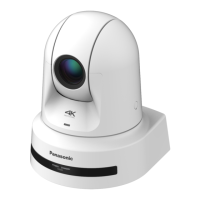

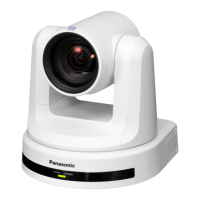
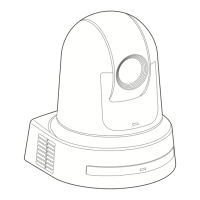
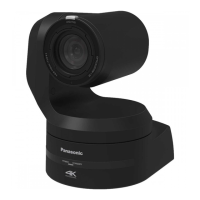
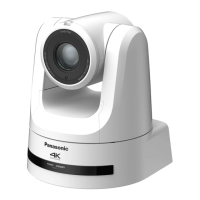

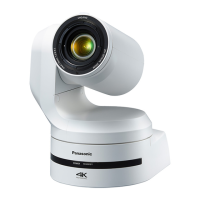
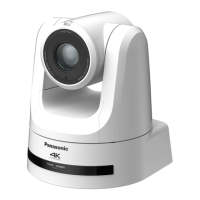
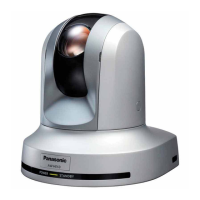
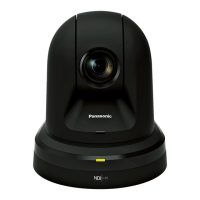
